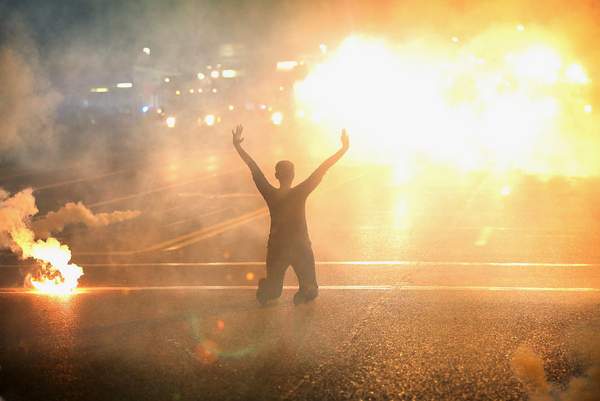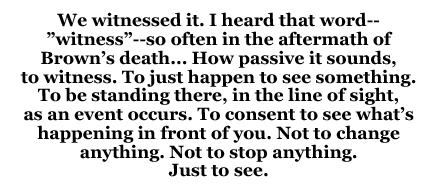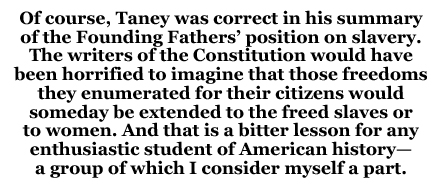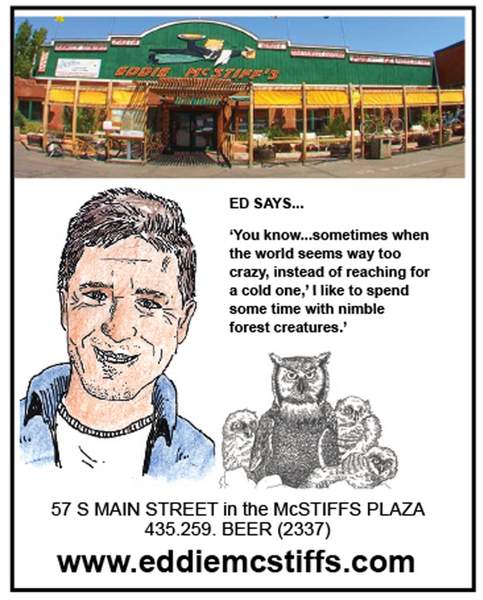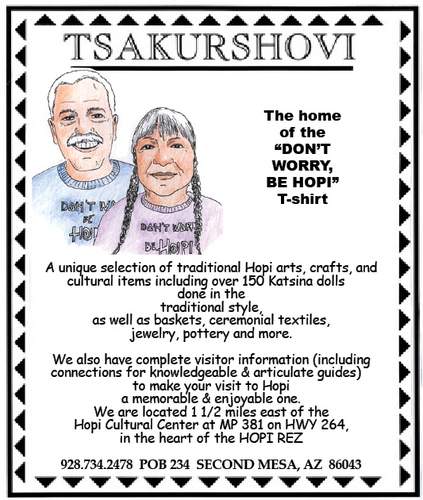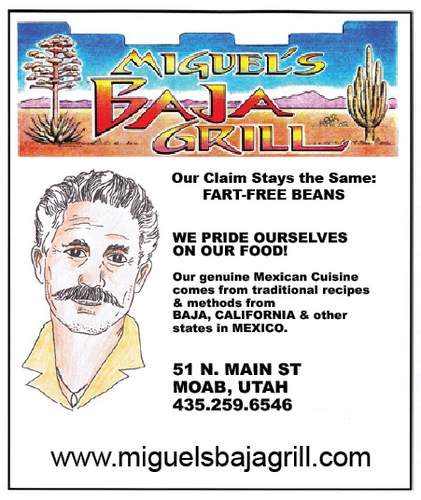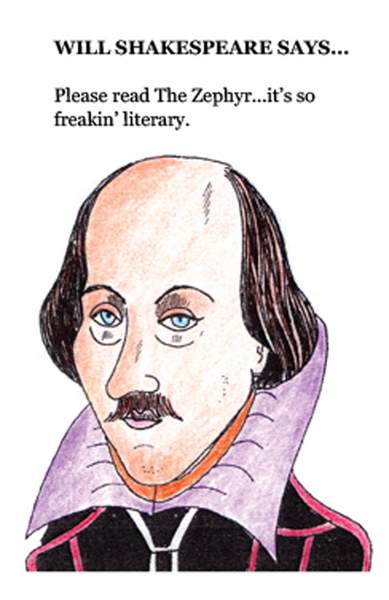Lately, I’ve been thinking about St. Louis. It was surprising how long the news lingered on that Midwestern city this summer, after the shooting of Michael Brown. Surprising that we all lingered there, as a country, for a span of a couple weeks, to witness the anger and the confusion of a community that had long been broken, but only now had managed to push that brokenness into the sightline of the larger American culture. We witnessed it. I heard that word–”witness”–so often in the aftermath of Brown’s death. “A witness reports seeing x;” “Members of the press witnessed the police doing y;” “We protesters are bearing witness;” “Our viewers are witnessing this tragedy;” How passive it sounds, to witness. To just happen to see something. To be standing there, in the line of sight, as an event occurs. To consent to see what’s happening in front of you. Not to change anything. Not to stop anything. Just to see.
And yet, that “witnessing” is something important. Because the whole historic span of the relationship between White and Black America lies on a foundation of White America refusing to see. White property owners looking away from the cruelties of slavery. White men and women refusing to see the conditions of Black sharecroppers. Ignoring the Black men and women turned away from the polls. Never questioning why the banks tripped over themselves to loan money for homes in certain (White) neighborhoods, to certain (White) hands, while those other (Black) neighborhoods languished. Who do we think built the White House? Surely the wooden beams were fastened into place by invisible hands. To the White mind, trays of food arrived at countless tables, mops and brooms scurried over innumerable floors, with no visible persons guiding them. “I know I’m not racist,” says your average American White person. “Outside of movies, I’ve never even seen racism.” Because to see something is to take on the reality of that thing existing. To witness a terrible act requires the mind to say, I guess we should probably do something to change this. But if we haven’t witnessed it, then we can’t be held responsible. Regardless of what terrible visions might be dancing about in our periphery—if we haven’t seen it, it isn’t real.
Two years ago, my husband Jim and I drove to St. Louis for a long weekend. We are both fascinated by American history, and rivers, so the city was a natural choice for a field trip. On our first day in town, we visited the Gateway Arch, and the museum below it: The Museum of Westward Expansion. The museum was fairly comprehensive in its depictions of the lifestyles of the White western settlers, and the lifestyles of the Native Americans before, during, and after their displacement. Long quotations from Red Cloud and Sitting Bull were exhibited beside life-sized models of Native women caring for their children. A few feet away, a fake cowboy fire flickered against the plastic faces of model settlers.
The museum didn’t glorify racism. It was careful, as modern museums must be, to note the slaughter of the Native Americans—their despair in the face of almost certain destruction, the winter starvation in the reservations, the forced marches to clear their land for white invaders. Clearly, an attempt had been made to give a somewhat equal voice to the vanquished tribes. But, ultimately, the exhibits sided with the white people. How could they not, as a museum dedicated to “Westward Expansion?” If they’d gone ahead and called it a Genocide museum, it would have made White visitors uncomfortable. Siding with the Native Americans would have made visiting White children question the wisdom of their all-but-canonized Founding Fathers. So, overall, the message was, “Yes, isn’t it unfortunate that all these non-White people had to suffer. It’s too bad they were just living there, in the way of the White people’s progress. And don’t you wish you could have been a cowboy?! What fun!”
And it occurred to me, standing in front of the cowboy fire, that I had no idea what it would feel like, as a Native American, or a Black person, to learn about American History. I imagined it would feel isolating. Sort of like how I feel in most war museums, standing in front of the one or two panels that remind the visitor, “Hey, women existed in this time period as well! Here’s a picture of one of them, knitting something for the troops.” Only a hundred times worse than that.
“History,” for the non-White American, would be a long list of events that, at best, ignored my ancestors’ existence and, at worst, cataloged their degradation and destruction . Or maybe the “best” and “worst” in that sentence ought to be flipped around. What is worse, after all, than scores of generations of men and women falling completely through the cracks of history—never to be remembered, written about, or honored by their descendants?
Barely two blocks away from the Gateway Arch and the Westward Expansion Museum sits the Old Courthouse of St. Louis, where the enslaved man Dred Scott first sued for his family’s freedom in 1847 and again in 1850. The first suit was thrown out on a bizarre technicality. Scott had not provided witnesses to show that he was, in fact, enslaved. While he waited to try his case again, Scott was held as property by the St. Louis Sheriff’s office, who themselves rented out his services a slave. Surprisingly, he won his second lawsuit in that courthouse. Not because the Missouri trial court didn’t approve of slavery, but because Scott’s owners had allowed him to live too long as a free man when they had moved between slave and free states. The trial court’s ruling was overturned by the Missouri Supreme Court, which expressed concern that the lower court’s opinion would weaken the institution of slavery in that state.
When Scott sued again in 1853, to gain freedom from his new owner, John Sanford, his case traveled as far as the Federal Supreme Court, which issued its now infamous ruling in Dred Scott v. Sanford. Justice Taney, writing for the majority, stated that there was no doubt as to the Founder’s intentions regarding citizenship for African Americans. “[Blacks] had for more than a century before [the writing of the Constitution] been regarded as beings of an inferior order, and altogether unfit to associate with the white race, either in social or political relations; and so far inferior, that they had no rights which the white man was bound to respect; and that the negro might justly and lawfully be reduced to slavery for his benefit. “ Further, Justice Taney bemoaned the terrible future which might follow were a court to grant citizenship to certain Black men:
“For if they were so received, and entitled to the privileges and immunities of citizens,…It would give to persons of the negro race, who were recognised as citizens in any one State of the Union, the right to enter every other State whenever they pleased…without pass or passport, and without obstruction…to go where they pleased at every hour of the day or night without molestation, unless they committed some violation of law for which a white man would be punished; and it would give them the full liberty of speech in public and in private upon all subjects upon which its own citizens might speak; to hold public meetings upon political affairs, and to keep and carry arms wherever they went.”
It’s stunning, isn’t it, to imagine the mind that would balk in horror at the thought of a Black man having “full liberty of speech” or liberty to “hold public meetings?” Of course, Taney was correct in his summary of the Founding Fathers’ position on slavery. The writers of the Constitution would have been horrified to imagine that those freedoms they enumerated for their citizens would someday be extended to the freed slaves or to women.
And that is a bitter lesson for any enthusiastic student of American history—a group of which I consider myself a part. I loved The Constitution from the first day I read it, and the Declaration of Independence. Those documents represent the pinnacle of Enlightenment thinking. Yes, they weren’t written with me in mind, but they are a cornerstone of the humanist philosophies that would, eventually, expand to provide rights to so many people never envisioned by their writers. Indeed, they are so strident in their assertion of the rights of individuals that it is difficult to imagine them having been written by such easily corruptible human hands. If it weren’t for the reprehensible 3/5ths compromise of the First Article to the Constitution, (which counts slaves as 3/5ths of a person for the purpose of recording population,) the documents would make a solid case for believers in alien interventions in earthly affairs.
But, aliens or not, our Founders were not perfect. In fact, I hate that phrasing. “Not perfect.” Like saying they were “flawed;” as if believing that a big chunk of the human population are property to be bought and sold, and to be treated no better than farm animals, is akin to an over-fondness for puns, or a nasty birthmark. They weren’t flawed. They were flat-out wrong, and should be judged harshly for their moral failings. Whole other developed nations, and a number of communities inside America at the time, had already renounced slavery. The Founders were great thinkers, yes, but they were comfortable in looking past the humanity of others, and such an oversight isn’t forgivable.
Does this complicate the teaching of American history? Yes. And that complication is exactly what we need right now in this country. We need our children to understand that you can love Thomas Jefferson, as I always have, but not look away from the massive injustices against African Americans and Native Americans of which he was a part, and in which he was instrumental. They should learn that, even if you are a good person, who tries to do the right thing, you may still be overlooking some deep, devastating problems around you. That, even if you think you’re listening, you may still struggle to believe others who tell you that your experiences aren’t the whole picture. That, all around you, people are living their lives, and experiencing tragedies that you don’t want to know about. They are the witnesses, standing vigil while a body is lying the streets for hours, and the first thing they need from you is that you stop when they ask, “Are you seeing this?” The first thing they need is for you to say, “Yeah, I am. I’m here with you. I’m seeing this too.”
Tonya Stiles is Co-Publisher of the Canyon Country Zephyr.
To read the PDF version of this article, click here.
To comment, scroll to the bottom of the page.
Don’t forget the Zephyr ads! All links are hot!


